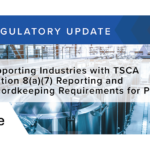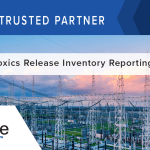
El Paso, located in the far western part of Texas, faces unique environmental challenges that demand careful attention to compliance auditing. Environmental compliance auditing is a crucial process for organizations operating in El Paso to ensure they meet all the necessary regulatory requirements and minimize their impact on the environment. In this article, we will explore the definition, importance, key components, and the role of environmental compliance auditing in El Paso. We will also delve into the regulatory framework and discuss future trends in this field.
Understanding Environmental Compliance Auditing
Environmental compliance auditing is the systematic process of evaluating an organization’s adherence to environmental regulations, standards, and policies. It involves assessing whether the organization is complying with relevant laws and regulations, identifying areas of non-compliance or potential risks, and developing corrective measures to mitigate those risks.
Definition and Importance of Environmental Compliance Auditing
Environmental compliance auditing is an essential tool for organizations to ensure they operate within legal boundaries and minimize their environmental impact. It provides a systematic approach to assess, monitor, and improve environmental performance. By conducting audits, organizations can identify areas where they need to improve their compliance efforts, make necessary changes, and avoid potential legal and reputational risks.
Key Components of Environmental Compliance Auditing
An effective environmental compliance auditing process typically consists of several key components:
- Evaluating legal and regulatory requirements
- Establishing auditing objectives and scope
- Collecting and analyzing relevant data
- Conducting on-site inspections and interviews
- Identifying areas of non-compliance or potential risks
- Developing corrective action plans
- Monitoring and reviewing compliance efforts
Evaluating legal and regulatory requirements is a crucial first step in the environmental compliance auditing process. This involves thoroughly examining the applicable laws, regulations, and policies that govern environmental protection. By understanding these requirements, organizations can ensure that their operations align with the necessary standards and avoid any potential violations.
Once the legal and regulatory requirements have been evaluated, the next step is to establish auditing objectives and scope. This involves defining the specific goals and boundaries of the audit, such as the areas or processes to be assessed. By clearly defining the objectives and scope, auditors can focus their efforts on the most critical aspects of environmental compliance.
Collecting and analyzing relevant data is another crucial component of environmental compliance auditing. This may involve reviewing documents, records, and reports related to the organization’s environmental performance. By analyzing this data, auditors can gain insights into the organization’s compliance status and identify any areas of concern that require further investigation.
Conducting on-site inspections and interviews is an integral part of the auditing process. This allows auditors to observe the organization’s operations firsthand and engage with employees to gather additional information. By conducting interviews and inspections, auditors can gain a deeper understanding of the organization’s environmental practices and identify any potential non-compliance issues that may not be evident from the data alone.
Identifying areas of non-compliance or potential risks is a critical step in the environmental compliance auditing process. This involves comparing the organization’s practices against the relevant legal and regulatory requirements. By identifying areas of non-compliance or potential risks, auditors can recommend appropriate corrective measures to address these issues and ensure future compliance.
Developing corrective action plans is an essential component of the auditing process. Once areas of non-compliance or potential risks have been identified, auditors work with the organization to develop effective strategies to address these issues. This may involve implementing new policies, procedures, or training programs to improve compliance efforts and minimize environmental risks.
Monitoring and reviewing compliance efforts is an ongoing process that ensures the organization maintains its commitment to environmental compliance. This involves regularly assessing the effectiveness of the corrective action plans, monitoring key performance indicators, and conducting follow-up audits to verify compliance improvements. By continuously monitoring and reviewing compliance efforts, organizations can identify any emerging issues and take proactive measures to address them promptly.
The Role of Environmental Compliance Auditing in El Paso
El Paso faces unique environmental challenges due to its geographical location and industrial activities. These challenges necessitate a robust environmental compliance auditing process to address the specific needs of the region.
The Unique Environmental Challenges in El Paso
El Paso is located in a region known for its arid climate and limited water resources. The city’s proximity to the U.S.-Mexico border also presents challenges related to cross-border pollution and resource management. Additionally, El Paso’s industrial sectors, such as manufacturing, energy production, and transportation, contribute to air and water pollution concerns.
How Environmental Compliance Auditing Addresses El Paso’s Needs
Environmental compliance auditing plays a crucial role in addressing El Paso’s environmental challenges. By conducting audits specifically tailored to the region, organizations can identify and rectify potential environmental risks. This proactive approach helps improve air and water quality, reduce pollution, and conserve natural resources.
The Process of Environmental Compliance Auditing in El Paso
The process of environmental compliance auditing in El Paso typically involves three main stages: initial assessment and planning, conducting the audit, and post-audit activities and reporting.
Initial Assessment and Planning
Prior to conducting an audit, organizations need to assess their existing compliance programs, understand the regulatory requirements applicable to their operations, and establish the scope and objectives of the audit. This phase involves collecting and reviewing relevant documents, interviewing stakeholders, and developing an audit plan.
Conducting the Audit
During this stage, auditors perform on-site inspections, collect data, review records, and interview employees to evaluate the organization’s compliance with environmental regulations. They assess processes, procedures, and operational activities, identifying any gaps or non-compliance issues.
Post-Audit Activities and Reporting
After completing the audit, organizations analyze the findings and develop an action plan to address any non-compliance issues or potential risks identified during the audit. They establish appropriate corrective measures, timelines, and responsibilities. Following implementation, a comprehensive report is generated, highlighting the findings, corrective actions, and recommendations.
Regulatory Framework for Environmental Compliance Auditing in El Paso
Environmental compliance auditing in El Paso operates within a regulatory framework that includes federal, state, and local regulations.
Federal Environmental Regulations
At the federal level, organizations conducting business in El Paso must comply with various environmental laws and regulations, such as the Clean Air Act, Clean Water Act, and Resource Conservation and Recovery Act. These laws set standards and requirements for pollution control, waste management, and environmental reporting.
State of Texas Environmental Regulations
The state of Texas has its own environmental regulations enforced by agencies such as the Texas Commission on Environmental Quality (TCEQ). These regulations complement federal laws and address specific regional concerns related to air quality, water resources, and hazardous waste management.
Local El Paso Environmental Regulations
In addition to federal and state regulations, El Paso has local ordinances and regulations aimed at addressing specific environmental challenges faced by the city. These may include zoning restrictions, noise pollution controls, and water conservation measures.
Future Trends in Environmental Compliance Auditing
Environmental compliance auditing is a dynamic field that continuously evolves as regulations, technologies, and sustainability practices advance.
Technological Advancements in Auditing
Advances in technology, such as remote sensing, data analytics, and automated monitoring systems, are revolutionizing how environmental compliance audits are conducted. These tools enable organizations to collect and analyze vast amounts of data more efficiently, improving the accuracy and effectiveness of audits.
Evolving Environmental Regulations and Standards
Environmental regulations and standards are continually updated and refined to address emerging environmental challenges and align with international agreements. Compliance auditing will need to adapt to these evolving regulatory frameworks to ensure organizations stay up-to-date with the latest requirements.
The Impact of Climate Change on Environmental Compliance Auditing
Climate change is altering the environmental landscape, making it crucial for organizations to assess and mitigate their carbon footprint. Environmental compliance auditing will increasingly focus on evaluating and reducing greenhouse gas emissions, promoting renewable energy sources, and implementing climate adaptation strategies.
In conclusion, environmental compliance auditing plays a vital role in El Paso, given its unique environmental challenges. By understanding the definition, importance, key components, and the regulatory framework surrounding this process, organizations can effectively navigate compliance requirements and contribute to a more sustainable future. As future trends reshape the auditing landscape, embracing technological advancements and keeping pace with evolving regulations will be crucial for organizations aspiring to maintain environmental compliance in El Paso’s dynamic environment.
As El Paso continues to navigate its unique environmental challenges, the need for comprehensive environmental compliance auditing becomes increasingly critical. ESE Partners is dedicated to guiding businesses through these complexities with a focus on sustainability and responsible growth. Our team of experts is well-versed in the diverse environmental regulations and ready to provide tailored solutions that not only meet regulatory demands but also enhance community well-being. If your organization is seeking to ensure environmental compliance and contribute positively to El Paso’s future, we invite you to Request A Proposal from ESE Partners today. Let us help you move forward responsibly.








